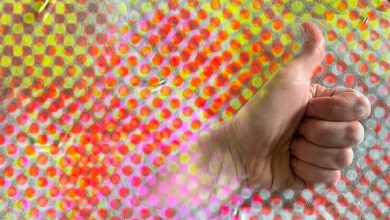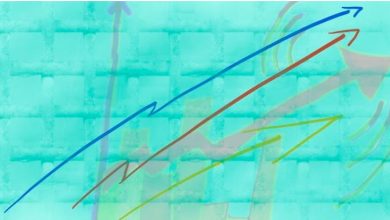Integrating the Shadow Self
“How can I be substantial if I do not cast a shadow? I must have a dark side also if I am to be whole.” Carl Jung “If any help was going to arrive to lift me out of my misery, it would come from the dark side of my personality.” Robert Bly This article contains exercises that are supposed to reveal and tame the parts of ourselves that we would like to hide.

Why did I choose this tool?
This is a topic I have been working with a lot lately. From personal experience I can share that although focusing on our strengths seems a more enjoyable process, until we have faced and assimilated our darkest side, we will only be living in an illusion of who we really are. Exploring our shadow side gives us tremendous opportunities for growth and development.
The topic is connected with the competence for undergoing personal/professional development through feedback, i.e. the way in which we perceive and react when other people give us feedback about ourselves, without which we would probably remain in the dark.
How does this apply to a trainer?
Being able to receive criticism about ourselves, or those parts of us that we don’t like or see is a powerful tool for self-growth. If we know ourselves well, we can receive other people’s feedback in a way which is balanced and non-threatening for our self-image.
Moreover, recognizing and releasing unwanted and unconscious patterns enables trainers to transform such patterns into consciously chosen thoughts and behaviors that are more beneficial for them and their work productivity.
Content:
The shadow, a term pioneered by Carl Jung, refers to the “dark side” of our personality, our ‘primitive’ and ‘negative’ human emotions and impulses such as rage, envy, greed, selfishness, desire, and the striving for power. It is the part of us we chose to deny and disown because we perceive it as bad or unacceptable for our self-image. So, these unwanted parts become relegated to our shadow. Interestingly, these parts do not go anywhere; they stay with us, in suppression, becoming a part of our unconscious. From there, they show their face and control our lives in ways we are unaware of (Bargh and Morsella, 2008).
Growing up we received positive reinforcement from our family and our surroundings for the positive traits we showed, such as love, generosity, and kindness. We liked this so we accepted these parts of ourselves. However, we were also admonished by our surroundings for undesirable behaviors, such as throwing tantrums or playing too loudly or being too silly, so we disowned them.
“Any part we disown within us turns against us. The personal shadow represents a collection of these disowned parts. The alarming things about the shadow is that it can operate on its own without our full awareness. It makes us do and say things we wouldn’t voluntarily do and our facial reactions express emotions we don’t consciously feel. Remaining unconscious of the shadow hurts our relationships with our spouses, family, and friends, and it will impact our professional relationships as well as our leadership abilities (Scott).”
Moreover, we tend to see in others those qualities we deny in ourselves. In psychology, this is known as projection. We project onto others anything we repress in ourselves.
If, for example, we get offended by how rudely someone is talking to us, it is probably because we haven’t accepted our own rudeness. Projecting is something we do without awareness; our egos use this mechanism to defend our image of ourselves. Projections distort reality, creating a gap between how we view ourselves and how we actually behave.
Sure, your colleagues might be aggressive, arrogant, inconsiderate, or impatient, but if you don’t have those same qualities within you, you won’t have a strong reaction to their behavior.
Whatever bothers you in another is likely a disowned part within yourself.
Get to know that part, accept it, make it a part of you, and next time, it may not evoke a strong emotional charge when you observe it in someone else.
Exercise 1: Watch Your Emotional Reactions
Remember that the shadow is elusive; it hides behind us. Our defense mechanisms are designed to keep our shadows repressed and out of view.
The more you pay attention to your behavior and emotions, the more likely you are to catch your shadow in the act.
One of the best ways to identify your shadow is to pay attention to any strong negative emotional responses to others
As Jung is often quoted saying:
“Everything that irritates us about others can lead us to an understanding of ourselves.”
But, we rarely have time to work with those emotions on the spot.
At the end of the day, it’s helpful to take five or ten minutes to reflect on your interactions with others and your related reactions.
Focus on what and who evokes an emotional charge in you. It doesn’t matter what the emotion is; it’s a clue that you are denying something within you.
Exercise 2: Challenge the Good Part
Many of us identify ourselves as being a “good person”. We were praised as children for being a “good boy” or a “good girl,” and that identification stuck with us.
This intensified the split between our conscious identity and our shadow.
Make a list of all of your positive qualities. Then, highlight the opposite. Try to identify the opposite within yourself.
For example, if you define yourself as a disciplined person, you’re repressing your lazy part. The lazy part is hiding in the shadow.
The disowned is influencing your behavior and constantly challenging your disciplined part.
So identify with this lazy part. See it. Accept it. Make friends with it. It’s okay to be lazy too.
Exercise 3: The 3-2-1 Shadow Process
If you want a step-by-step method for shadow work, try the 3-2-1 Shadow Process developed by integral philosophy Ken Wilber in Integral Life Practice.
Here are the basic steps:
Step 1: Choose what you want to work with. It’s often easier to begin with a person with whom you have difficulty (e.g., partner, relative, boss).
This person may irritate, disturb, annoy, or upset you. Or maybe you feel attracted to, obsessed with, infatuated with, or possessive about this person.
Choose someone with whom you have a strong emotional charge, whether positive or negative.
Step 2: Face it: Now, imagine this person. Describe those qualities that most upset you, or the characteristics you are most attracted to using 3rd-person language (he, she, it).
Talk about them out loud or write it down in a journal. Express your feelings.
Don’t calculate what to say. There is no need to be nice. The person you are describing will never see this.
Step 3: Talk to them: Dialogue with this person in your imagination. Speak in the 2nd person to this person (using “you” language).
Talk directly to this person as if he or she was there. Tell them what bothers you about them.
Ask them questions such as:
- Why are you doing this to me?
- What do you want from me?
- What are you trying to show me?
- What do you have to teach me?
Imagine their response to these questions. Speak that imaginary response out loud. Record the conversation in your journal if you like.
Step 4: Be it: Become this person. Take on the qualities that either annoy or fascinate you.
Embody the traits you described in step 2. Use 1st-person language ( I, me, mine).
This may feel awkward, and it should. The traits you are taking on are the exact traits you have been denying in yourself.
Use statements such as:
- I am angry.
- I am jealous.
- I am radiant.
Fill in the blank with whatever qualities you are working with: “I am __________.”
Step 5: Notice these disowned qualities in yourself.
Experience the part of you that is this trait. Avoid making the process abstract or conceptual: just BE it.
Now you can re-own and integrate this quality in yourself.
Exercise 4: Archetypes
This exercise invites us to reflect on archetypes, the lights and shadows of each of them and to understand patterns that we are using in everyday life.
What is an archetype?
According to Carl Jung, a root of an archetype is in the “collective unconscious” of mankind. These experiences exist in the subconscious of every individual, and are re-created in literary works, or in other forms of art. Archetype is an element of our psyche which takes a lead in particular moments of our life. It is a metaphor referring to a particular set of behaviors and attitudes.
It’s widely acknowledged that each of us have 4 archetypes: Child, Victim, Saboteur, and Prostitute. Moreover there are hundreds more defined archetypes, which are described by Caroline Myss in her book The Language of Archetypes: Discover the Forces that Shape Your Destiny.
What is interesting, some of the archetypes may align with your occupation as a trainer.
For this exercise we would invite you to use a visual representation of 80 different archetypes.
Our choice was a deck of 80 archetypes called: Archetypes Cards – which was created by Caroline Myss. Each illustration individually was designed to provide the basic Light and Shadow Attributes of a different Archetype.
Or you may also use the list of Archetypes, without visual representations. Write the following archetypes on separate papers and shuffle them as if they were a deck of cards.
List of Archetypes
Actor Anarchist Bureaucrat Caregiver Companion Crone Detective Diplomat Dreamer Fool God Healer Historian Knight Magician Matriarch Muse Networker Patriarch Poet Priest Prophet Puck Rebel Revolutionary Sadist Scholar Seductress Servant Sidekick Storyteller Thief Tyrant Visionary Wizard Addict Artist Beggar Child Coward Crook Dictator Disciple Eternal Gala Goddess Herald Innovator Liberator Martyr Midas Mystic Nun Pilgrim Politician Prince Prostitute Puppet Redeemer Robot Sage Scout Seeker Settler Slave Student Tramp Vampire Warrior Zombie Alchemist Avenger Bully Clown Craftsperson Damsel Dilettante Diva Boy/Girl Evangelist Gambler Gossip Hermit Judge Lover Masochist Monk Nature Boy/Girl Olympian Pioneer Predator Princess Provocateur Puritan Rescuer Saboteur Samaritan Scribe Seer Shaman Spoiler Teacher Trickster Victim Witch
Focus on your profession as a trainer; imagine you working in a group.
Then choose 1 archetype which you feel drawn to, and 1 archetype choose randomly (just close your eyes and pick one).
Then describe those two archetypes. What would they mean to you? What are they representing? What kind of behaviors and attitudes they manifest in a context of your work? Describe the lights and the shadows of each of them.
If you need support in description, ask other people how they would define them, or check the description made by C. Myss on her website: https://www.myss.com/free-resources/sacred-contracts-and-your-archetypes/appendix-a-gallery-of-archtypes/
How would you like to use the power of those archetypes better?
How would you work with the shadows of these archetypes?
What changes would you like to make in your work as a trainer?
What should you be aware of when you enter a group of trainees next time?
Reflection questions:
- Have you experienced working with your own shadow before? If so, what have you learned? What is the difference between then and now?
- Could working in dialogue with another person help you work with the shadow? Who can you imagine it with
- How could knowing your shadow affect you as a trainer when working with a group?
- What other theories/approaches do you know that integrate and show the positive side of features that we underestimate/the shadow?
- How can working with shadows support lifelong learning?
- Is there anything you would like to change in this approach? If yes, what?






